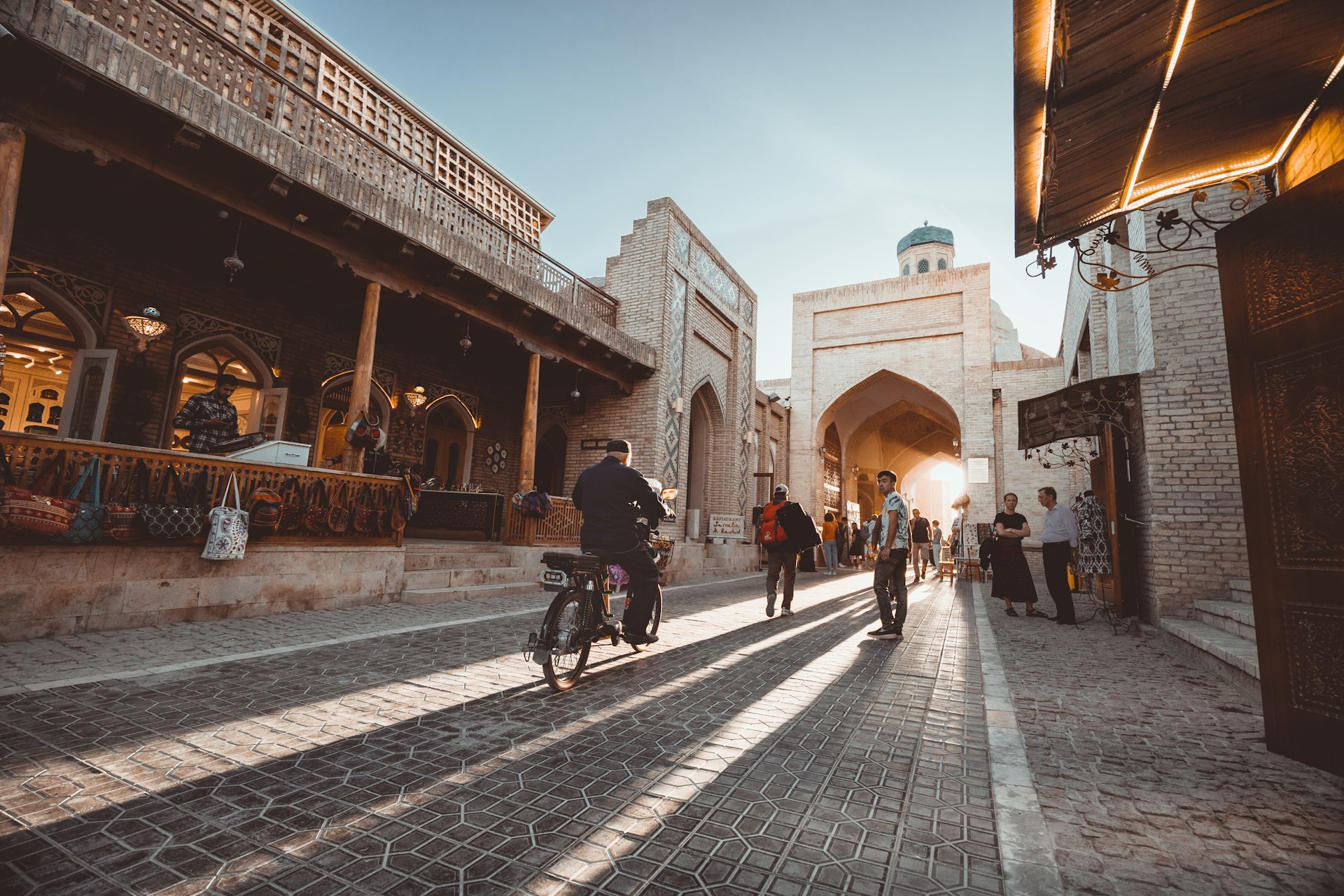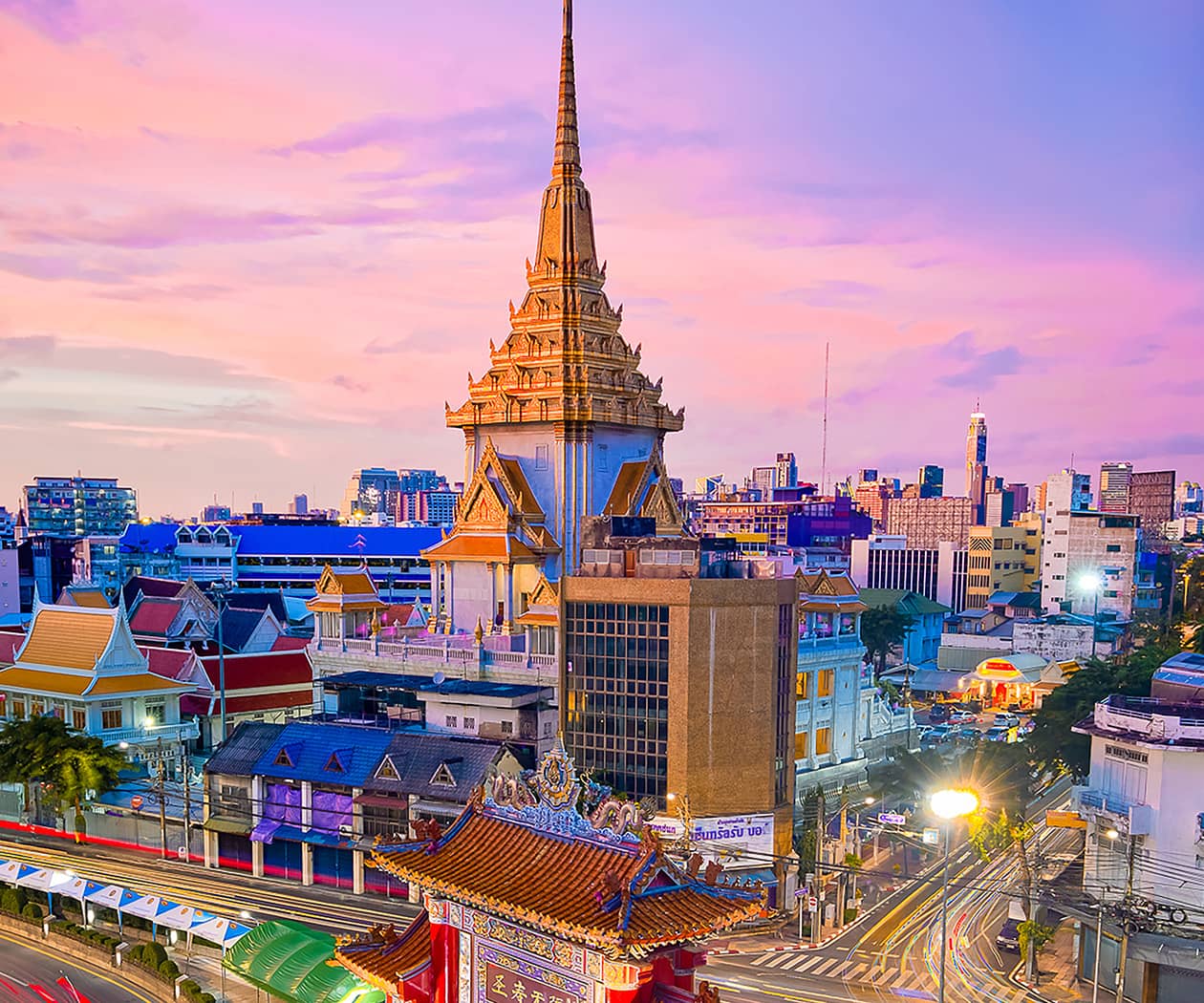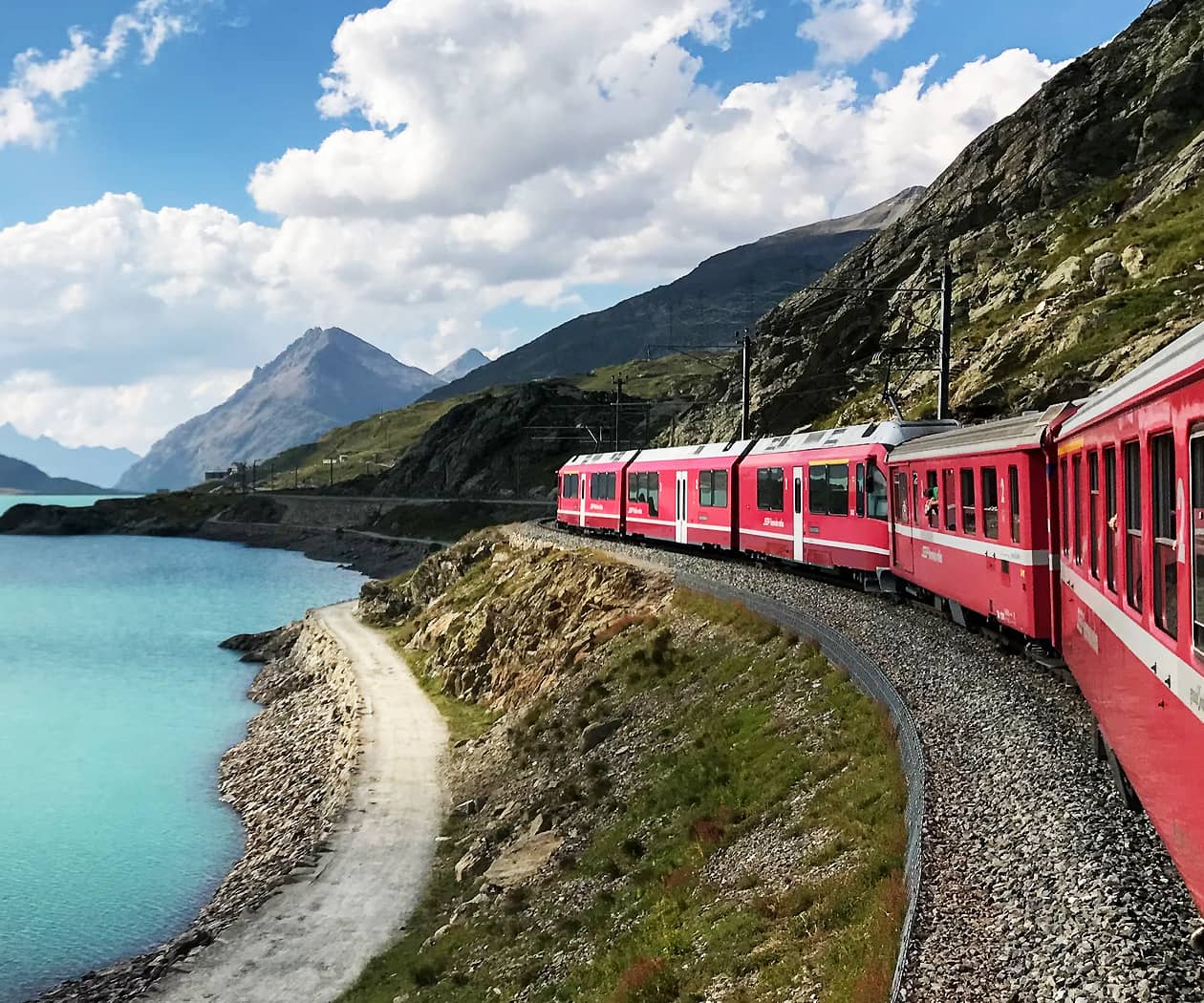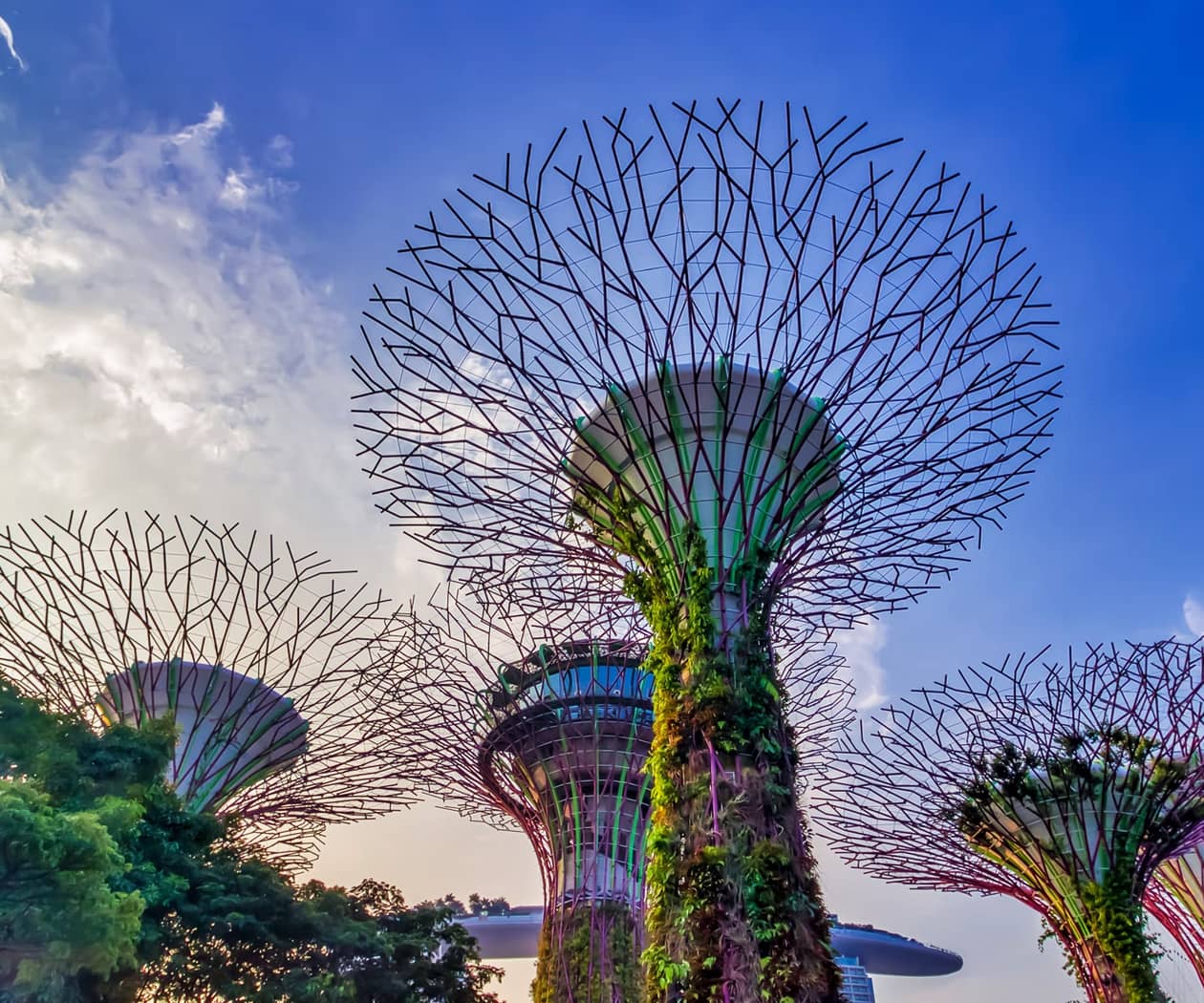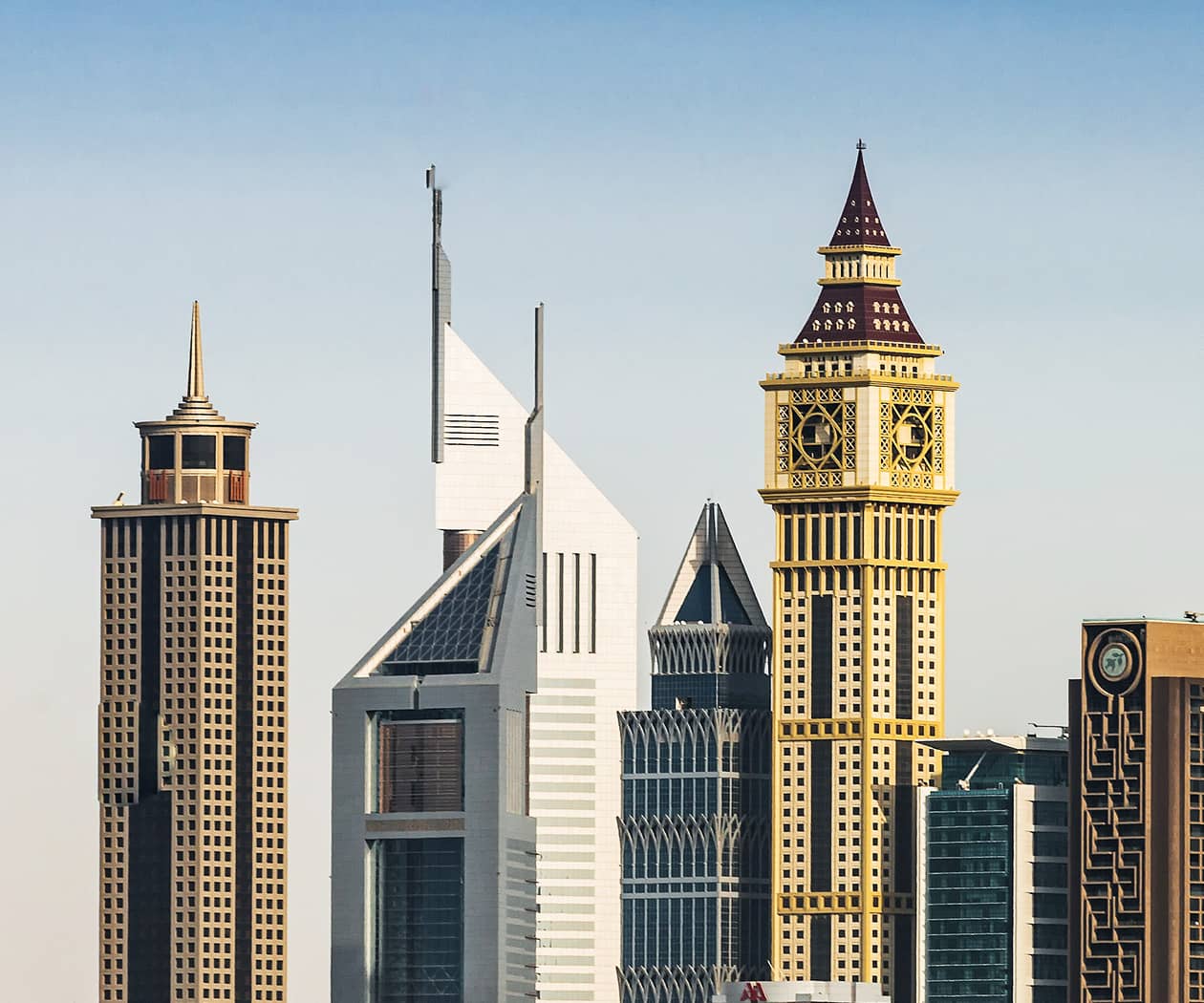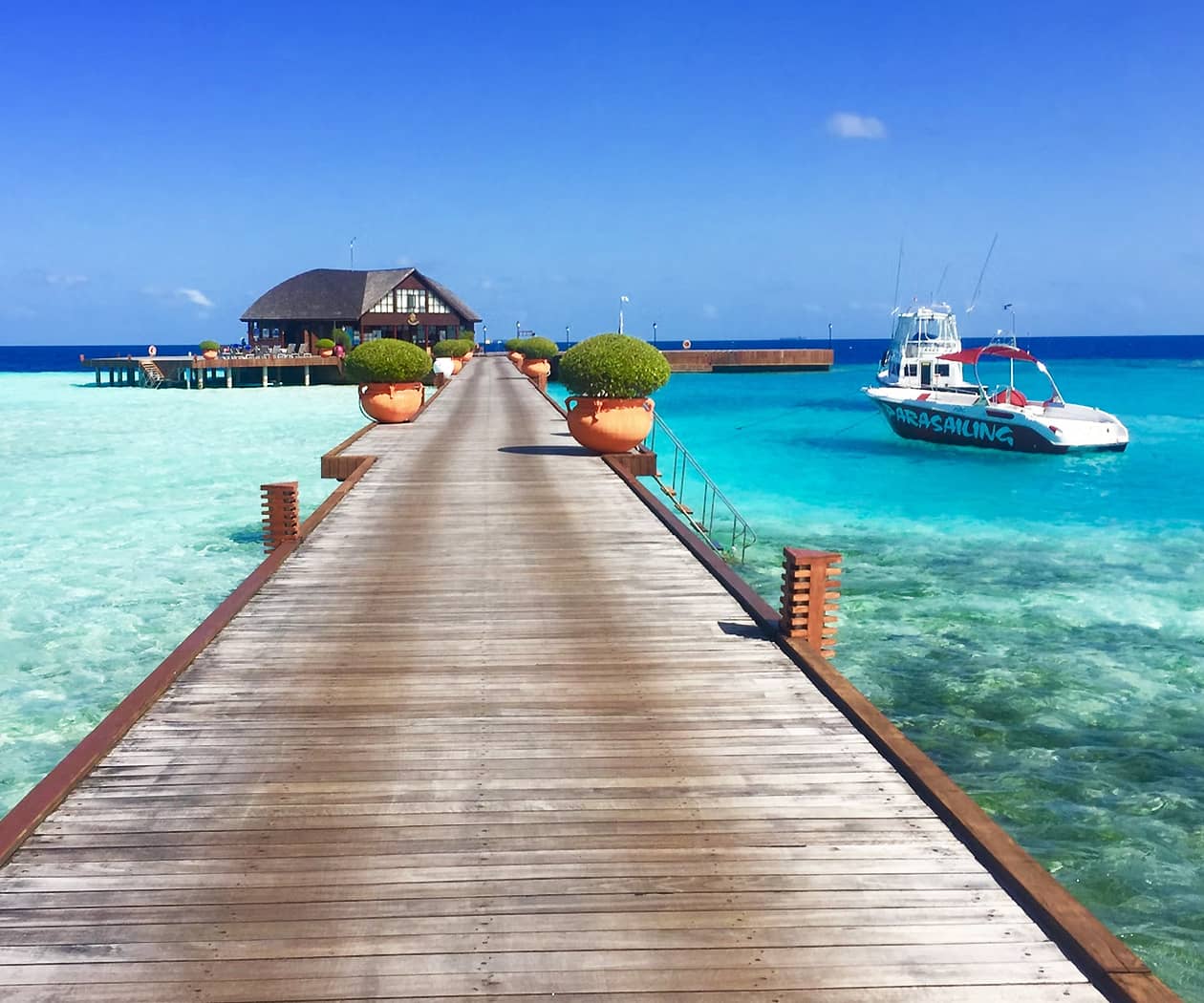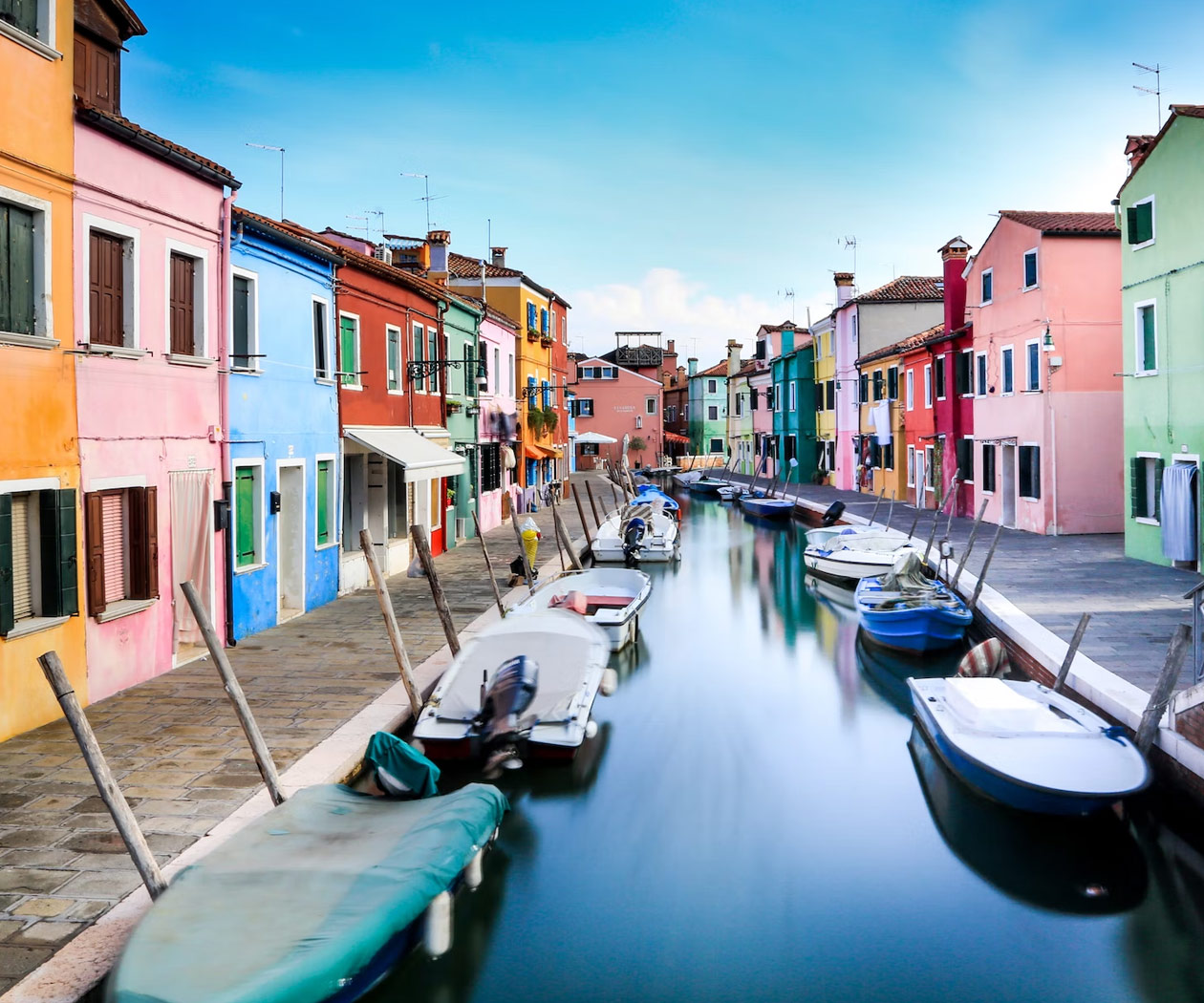Historical Background
Bukhara’s history dates back to the 5th century BCE. Throughout its history, it has been ruled by various empires, including the Persians, Greeks, Arabs, Mongols, and Timurids
Samanid Dynasty (9th-10th century): Bukhara flourished as a center of learning and culture under the Samanid Dynasty. Ismail Samani, founder of the dynasty, contributed significantly to the city’s development. The Samanids built numerous schools, mosques, and other public buildings during their rule.
Mongol Empire (13th century): Bukhara was conquered by Genghis Khan’s army in 1220, leading to widespread destruction. However, the city was later rebuilt and continued to thrive.
Timurid Empire (14th-15th century): During the Timurid era, Bukhara once again became a cultural and trading center. Timur (Tamerlane) and his successors erected many magnificent structures, including mosques, minarets, and mausoleums.
Bukhara Khanate (16th-19th century): Bukhara became the capital of the independent Bukhara Khanate. This period saw further development in religious and educational architecture.
Major Attractions
1. Ark Fortress
The Ark Fortress, located in the heart of Bukhara’s Old City, served as the residence and administrative center of Bukhara’s rulers. Originally built in the 5th century, it underwent multiple expansions and renovations over the centuries. Within the fortress are:
Palaces: Residences of Bukhara’s rulers, showcasing traditional Central Asian architectural styles.
Mosques: Used for religious ceremonies by the rulers, adorned with intricate tilework and woodcarvings.
Prison: A historical prison exhibiting ancient methods of confinement and punishment.
Museum: Houses artifacts, documents, and archaeological findings related to Bukhara’s history, culture, and craftsmanship.
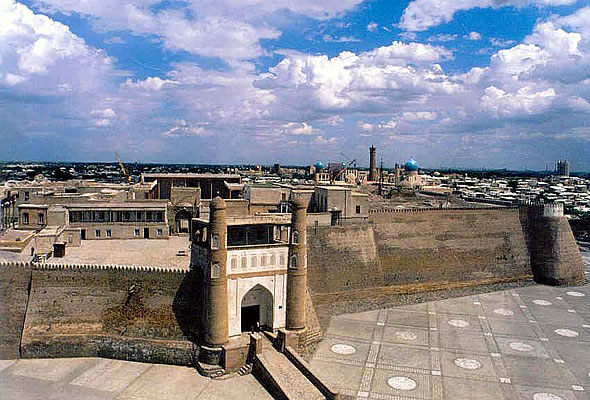
2. Kalon Minaret
Built in 1127, the Kalon Minaret is one of Bukhara’s most iconic landmarks. Standing at 47 meters tall, it is one of the tallest minarets in Central Asia. Constructed from yellow bricks, it is decorated with elaborate brickwork patterns. Historically, Genghis Khan spared the minaret from destruction due to its impressive stature.
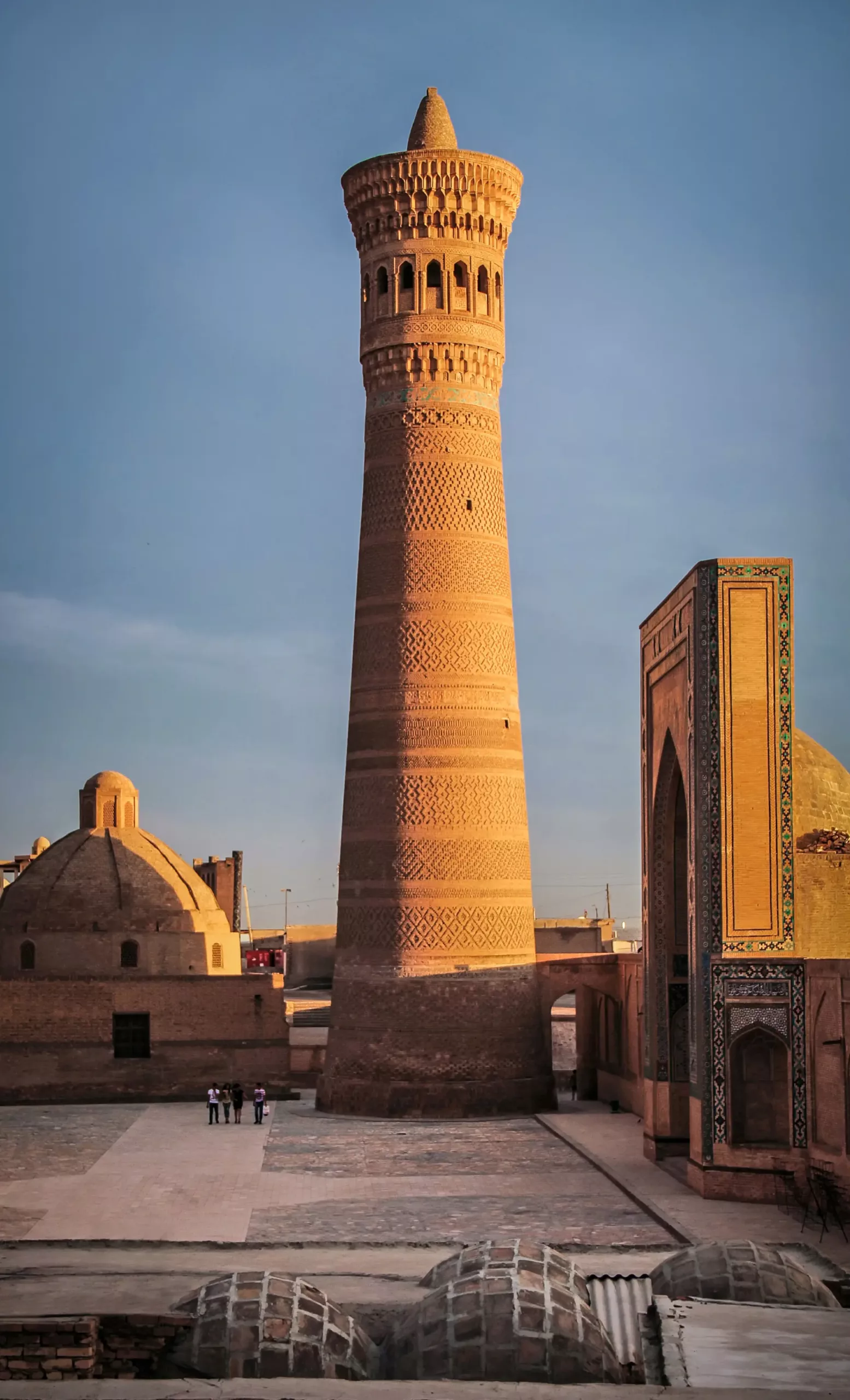
3. Kalon Mosque
Adjacent to the Kalon Minaret, the Kalon Mosque is one of Bukhara’s largest mosques. Constructed in the 16th century, it can accommodate over ten thousand worshippers. The mosque features a spacious courtyard surrounded by arcades and a grand central dome. Its interior is adorned with intricate blue and white tilework, showcasing the region’s Islamic architectural prowess.
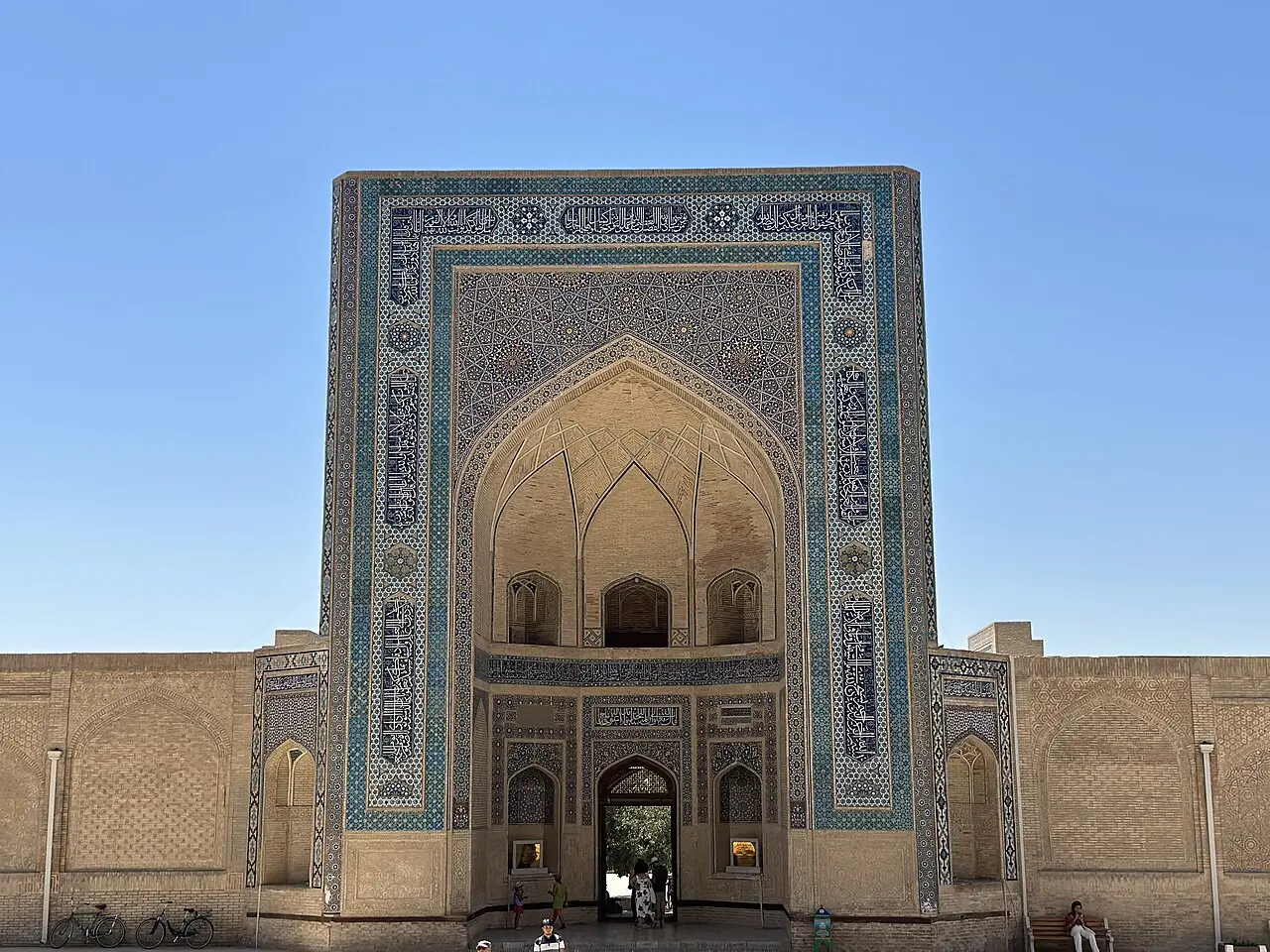
4. Ismail Samani Mausoleum
Built between the late 9th and early 10th centuries, the Ismail Samani Mausoleum honors Ismail Samani, founder of the Samanid Dynasty. It is one of Bukhara’s oldest buildings and a masterpiece of Islamic architecture in Central Asia. Constructed from brick, the mausoleum’s exterior is adorned with intricate brickwork patterns, reflecting the era’s advanced architectural techniques.
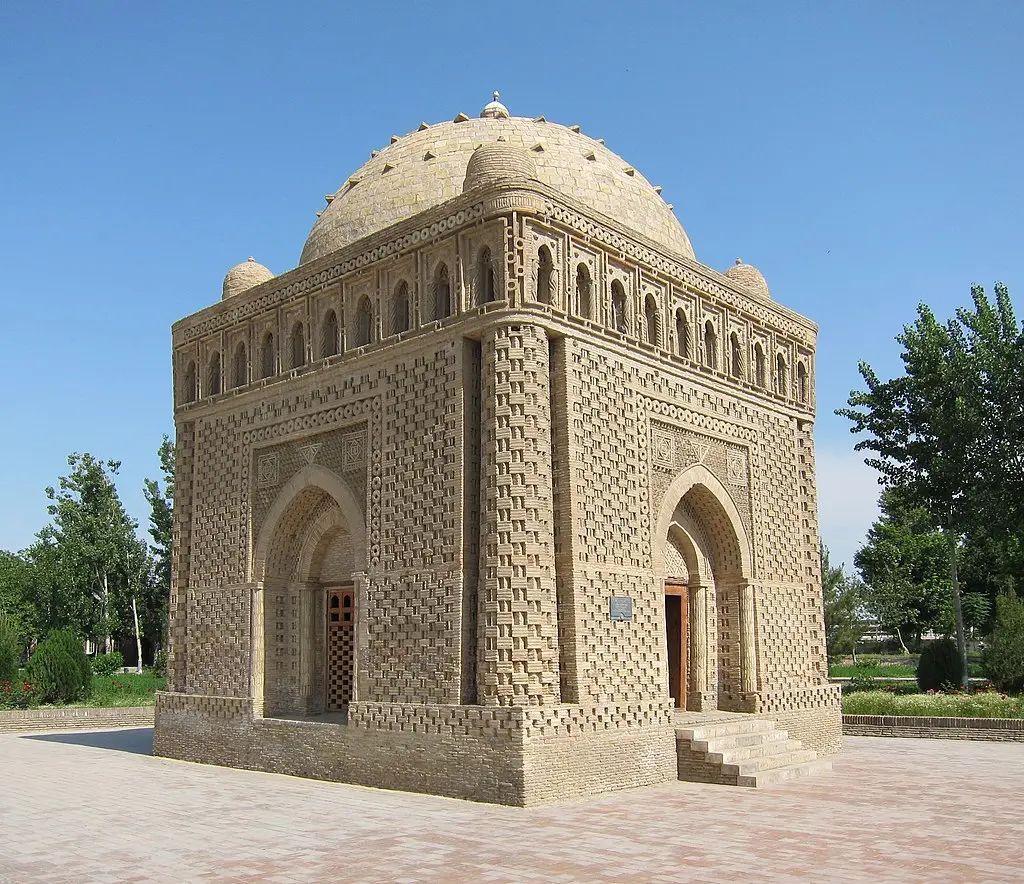
5. Lyab-i Hauz Complex
Located in Bukhara’s city center, the Lyab-i Hauz complex includes a large pond surrounded by mosques and madrasas. “Lyab-i Hauz” translates to “by the pond,” historically serving as a social and gathering place for Bukhara’s residents.
Pond: A central feature surrounded by trees and gardens, offering a serene spot for relaxation.
Mosques and Madrasas: Several mosques and madrasas in the Lyab-i Hauz area showcase diverse architectural styles and intricate craftsmanship. Notable among them is the Nadir Divan-Beghi Madrasa, built in the 16th century.
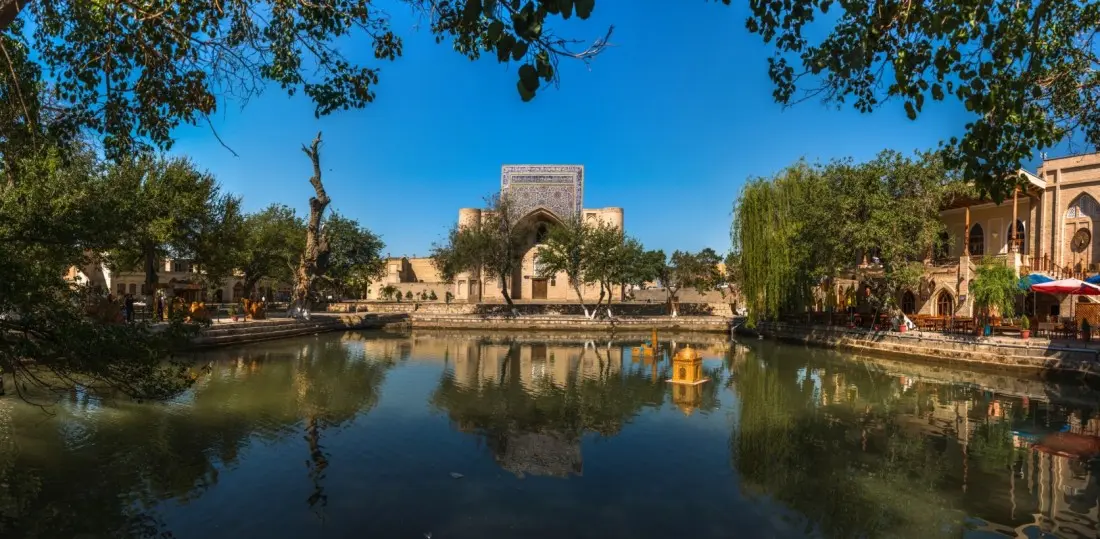
6. Mir-i Arab Madrasa
One of Central Asia’s most significant Islamic schools, Mir-i Arab Madrasa was founded in the 16th century. It was established by Ubaidullah Khan to honor his spiritual mentor, Sheikh Abdullah Yamani of Yemen.
The madrasa’s facade features blue and green glazed tilework, complemented by intricate patterns. It houses classrooms, dormitories, and a mosque, serving as a pivotal center for studying Islamic law and theology.
Culture and Traditions
Bukhara is renowned for its rich cultural heritage and traditional craftsmanship:
Handicrafts: Bukhara’s artisans produce a variety of crafts, including silk textiles, carpets, pottery, and metalwork. Bukhara’s silk is esteemed for its softness and intricate patterns, while its carpets are known for meticulous weaving and complex designs.
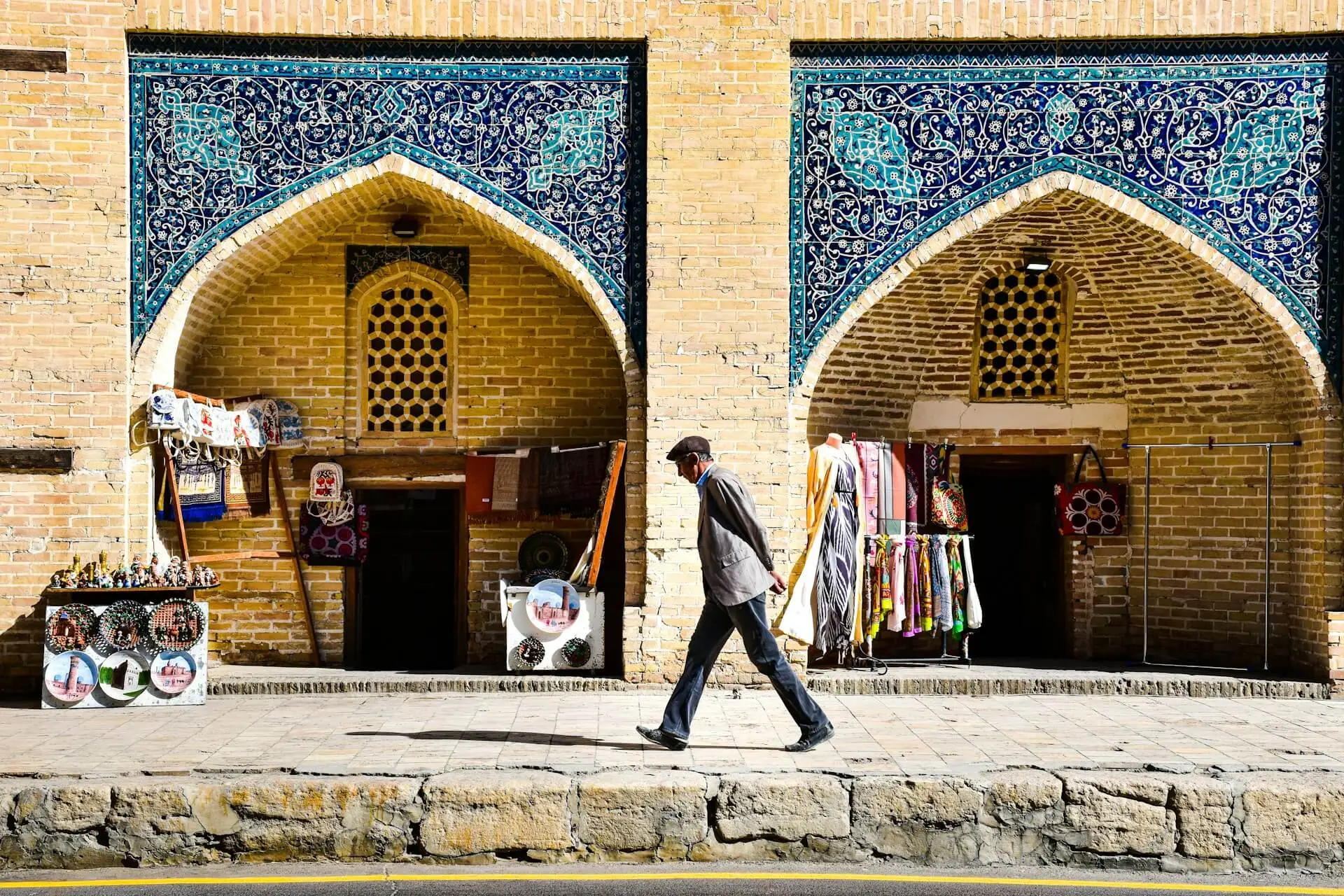
Music and Dance: Bukhara’s traditional music and dance blend Persian, Arabic, and Turkish influences. Traditional instruments include the dutar (a two-stringed lute), dotara (a four-stringed lute), and daf (a hand drum). The city’s dances are graceful and expressive, often performed during festivals and weddings.
Festivals: Bukhara hosts several traditional festivals annually, including Nowruz (Persian New Year), Eid al-Adha, and Eid al-Fitr. These celebrations feature music, dance, traditional cuisine, and cultural displays.
Cuisine
Bukhara’s cuisine offers a diverse range of dishes, primarily focusing on meats and noodles:
Plov: A traditional Central Asian rice pilaf typically made with lamb or beef, carrots, onions, and various spices. Bukhara’s plov is renowned for its rich flavors and aroma.
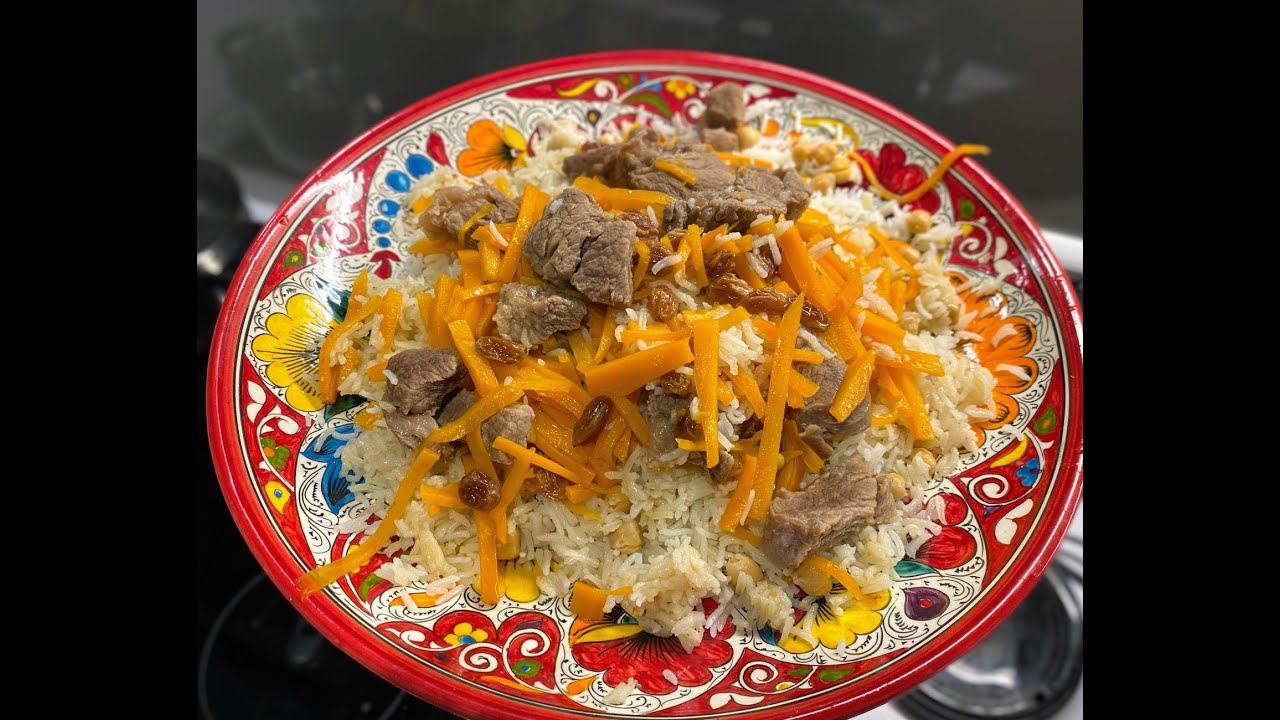
Lagman: A noodle soup made with hand-pulled noodles, meat (beef or lamb), vegetables, and spices. Lagman’s broth is flavorful, and the noodles are chewy, making it a beloved Bukhara dish.
Shashlik: A popular Central Asian dish consisting of skewered and grilled meat (typically lamb, beef, or chicken). Shashlik is grilled over charcoal, resulting in tender and savory skewers.
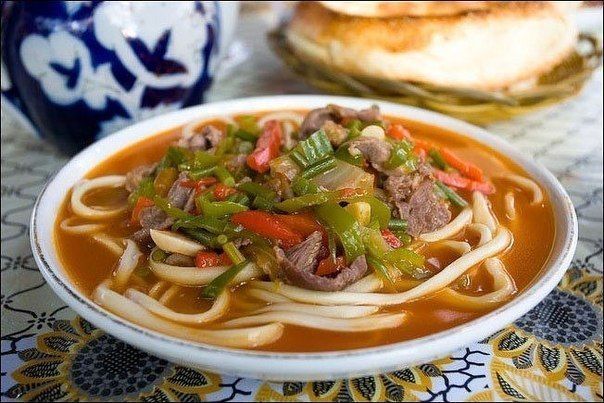
Traditional Desserts: Bukhara’s desserts include baklava (a sweet pastry), chak-chak (honey cake), and various dried fruits. These sweets are enjoyed during festivals and social gatherings.
Transportation and Accommodation
Bukhara has an international airport offering flights to major cities such as Tashkent. The city’s public transportation includes buses and taxis, while walking or renting bicycles are popular ways to explore.
Transportation: Public buses and taxis provide convenient travel within Bukhara. Visitors can also explore the city on foot or rent bicycles.
Accommodation: Bukhara offers a range of accommodations, from luxury hotels to traditional caravanserais (inns) and budget-friendly guesthouses. Luxury hotels provide modern amenities, while caravanserais offer a more authentic stay reflecting local traditions.
Bukhara is a city steeped in history and culture, where each historical site tells a unique story. Whether you’re a history enthusiast, culture explorer, or culinary aficionado, Bukhara offers rich experiences and unforgettable memories. It not only serves as a witness to Central Asia’s history and culture but also showcases the charm of cultural convergence along the Silk Road.

